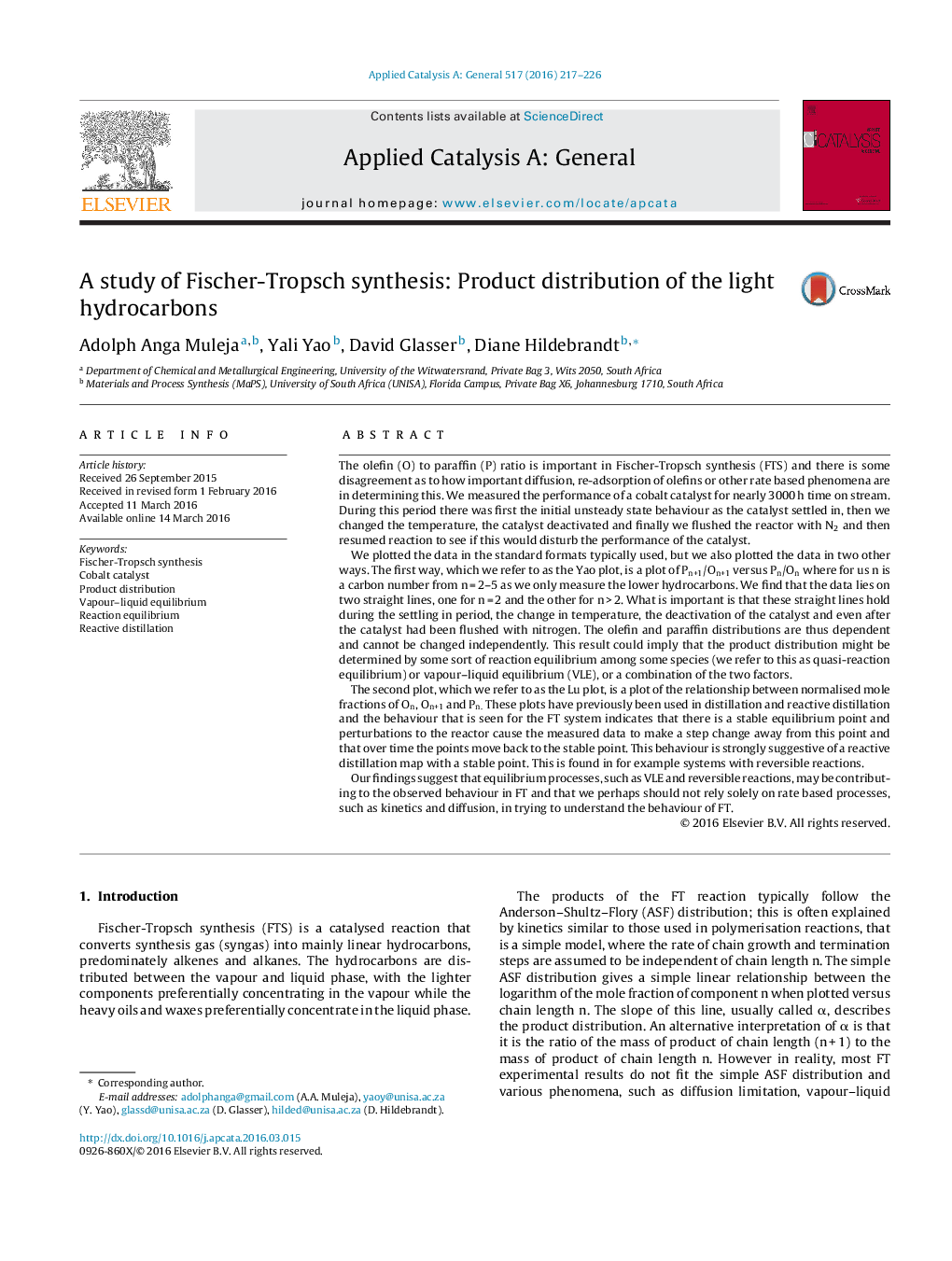| کد مقاله | کد نشریه | سال انتشار | مقاله انگلیسی | نسخه تمام متن |
|---|---|---|---|---|
| 39108 | 45806 | 2016 | 10 صفحه PDF | دانلود رایگان |
• A ternary plot of On, On+1 and Pn shows that the reactor operation tends to a stable point.
• Linear relationship between P(n+1)/O(n+1) and P(n)/O(n) holds for this work even during start-up and catalyst deactivation.
• Kinetics alone cannot fully explain the above findings.
• Quasi equilibrium and VLE may determine the FT product distribution.
• The approach used in reactive distillation may need to be considered for FTS modelling.
The olefin (O) to paraffin (P) ratio is important in Fischer-Tropsch synthesis (FTS) and there is some disagreement as to how important diffusion, re-adsorption of olefins or other rate based phenomena are in determining this. We measured the performance of a cobalt catalyst for nearly 3000 h time on stream. During this period there was first the initial unsteady state behaviour as the catalyst settled in, then we changed the temperature, the catalyst deactivated and finally we flushed the reactor with N2 and then resumed reaction to see if this would disturb the performance of the catalyst.We plotted the data in the standard formats typically used, but we also plotted the data in two other ways. The first way, which we refer to as the Yao plot, is a plot of Pn+1/On+1 versus Pn/On where for us n is a carbon number from n = 2–5 as we only measure the lower hydrocarbons. We find that the data lies on two straight lines, one for n = 2 and the other for n > 2. What is important is that these straight lines hold during the settling in period, the change in temperature, the deactivation of the catalyst and even after the catalyst had been flushed with nitrogen. The olefin and paraffin distributions are thus dependent and cannot be changed independently. This result could imply that the product distribution might be determined by some sort of reaction equilibrium among some species (we refer to this as quasi-reaction equilibrium) or vapour–liquid equilibrium (VLE), or a combination of the two factors.The second plot, which we refer to as the Lu plot, is a plot of the relationship between normalised mole fractions of On, On+1 and Pn. These plots have previously been used in distillation and reactive distillation and the behaviour that is seen for the FT system indicates that there is a stable equilibrium point and perturbations to the reactor cause the measured data to make a step change away from this point and that over time the points move back to the stable point. This behaviour is strongly suggestive of a reactive distillation map with a stable point. This is found in for example systems with reversible reactions.Our findings suggest that equilibrium processes, such as VLE and reversible reactions, may be contributing to the observed behaviour in FT and that we perhaps should not rely solely on rate based processes, such as kinetics and diffusion, in trying to understand the behaviour of FT.
Figure optionsDownload high-quality image (138 K)Download as PowerPoint slide
Journal: Applied Catalysis A: General - Volume 517, 5 May 2016, Pages 217–226
